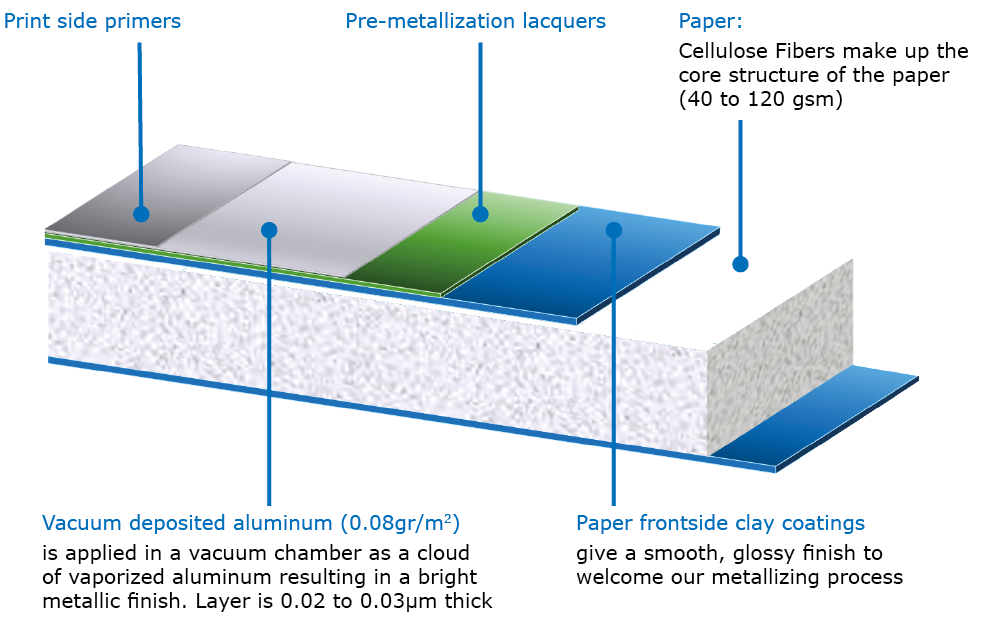What’s the best way to obtain a glossy finish for packaging?
A glossy finish is ideal for products that seek to be the centre of attention. Not only does it help packaging stand out on supermarket shelves and in Instagram feeds, a shiny surface conveys a certain impression about the product inside. Producers of high-end cosmetics, indulgent treats such as premium chocolate or sparkling wine and luxury subscription boxes tend to opt for glossy finishes, and for good reason: consumers tend to associate premium packaging with quality.
There are several ways to get a high shine metallic look for packaging and labelling products. Let’s take a look at the main ones:
1. Metallized PET films
Metallized PET (polyethylene terephthalate) films are popular with brands looking for a glossy finish at a high tensile strength and a low production cost. The product is created by heating aluminium until it melts evenly over the PET substrate in a thin layer. Metallized PET films are a great way to get a glossy premium finish, but come with some disadvantages, notably issues with adhesion to board and foldability. What’s more, PET film is difficult to separate from base materials, which compromises products’ recyclability and increases their environmental impact.
2. Metallic inks
Metallic inks are a great way to bring a little extra to packaging products and help them stand out. Many brands use them to add small enhancements or to make details such as logos “pop” against a matte background. Inks can also be used to cover a larger surface, but tend not to give as glossy a result as some alternatives. They can be used on any density of paper or board and provide a good print finish when applied correctly, but specialized equipment may be necessary in order to achieve a high quality result.
3. Stamping foil
Much like metallic inks, foil stamping, a process that involves transferring the finish from metallized polyester film onto a base material such as paperboard, is often used to obtain small enhancements and highlights. While the result can be impressive on small areas, quality can diminish over larger surfaces. What’s more, leftover PET film needs to be disposed of, meaning a higher waste ratio than for other methods.
4. Metallized paper
Metallized paper is produced using a similar technique to metallized PET and provides comparable performance and aesthetics. However, unlike PET, it doesn’t contaminate raw base materials and hinder their recyclability. Metallized paper is not only 100% recyclable, it’s based on FSC-certified paper and produced though low-waste manufacturing methods, making it an ideal option for companies seeking to offer glossy good looks while reducing their environmental impact.

To find out more about how our products can help you uphold your sustainability commitments, please get in touch with our team.